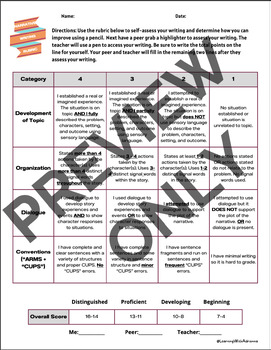Is This The Good Life For You? Self-Assessment And Reflection

Table of Contents
Defining Your "Good Life"
The "good life" isn't a one-size-fits-all concept. It's entirely subjective and requires honest personal definition. What brings one person joy might leave another feeling unfulfilled. To begin your "good life self-assessment," take some time for introspection and consider the following:
-
Identify your core values: What principles guide your decisions and actions? Common examples include family, creativity, adventure, learning, helping others, financial security, health, and spirituality. List your top five values. These values will form the bedrock of your good life definition.
-
Consider your ideal lifestyle: Do you envision yourself living in a bustling city or a quiet countryside? Do you thrive in a fast-paced environment or prefer a more relaxed lifestyle? Are you an independent soul or do you flourish in collaborative settings? These lifestyle preferences heavily influence your "good life" assessment.
-
Visualize your ideal day, week, and year: Close your eyes and imagine your perfect day. What activities are you engaged in? Who are you with? How do you feel? Now expand this visualization to a week and then a year. This exercise helps paint a vivid picture of your ideal life.
-
Reflect on past experiences: Think back on moments when you felt truly alive and fulfilled. What were you doing? Who were you with? What aspects of those experiences resonated most deeply? Identifying these patterns reveals what truly brings you joy and purpose.
Honest Self-Assessment: Where Are You Now?
Now that you have a clearer vision of your ideal "good life," it's time for an honest self-assessment of your current reality. This isn't about self-criticism; it's about gaining a realistic understanding of where you stand. Be brutally honest with yourself during this "good life self-assessment" phase.
-
Rate your current satisfaction: On a scale of 1 to 10 (1 being completely dissatisfied and 10 being completely satisfied), rate your current level of satisfaction in key life areas: relationships, career, health, finances, personal growth, and spiritual well-being. Be honest with your scores, even if they're less than ideal.
-
Identify discrepancies: Compare your ratings with your vision of the "good life." Where are the significant gaps? Are there areas where you're thriving, and areas where you're falling short? This step helps pinpoint areas needing attention during your self-assessment.
-
Pinpoint areas needing improvement: Based on the discrepancies you've identified, list specific areas requiring improvement or change. Be as detailed as possible. For example, instead of "improve relationships," specify "spend more quality time with my family" or "improve communication with my partner."
-
Acknowledge your strengths and weaknesses: Recognize your strengths and celebrate them. Acknowledge your weaknesses without judgment, viewing them as opportunities for growth. This balanced perspective is crucial for a productive self-assessment.
Identifying Obstacles and Opportunities
The path to the "good life" is rarely smooth. Identifying potential obstacles is essential for creating a realistic plan.
-
Fear of failure or change: Fear is a common barrier. Acknowledge this fear, but don't let it paralyze you. Break down large changes into smaller, manageable steps. Celebrate each small victory along the way to build confidence.
-
Limiting beliefs: Unhelpful beliefs can sabotage your efforts. Identify these beliefs (e.g., "I'm not good enough," "I don't deserve happiness") and challenge their validity. Replace them with empowering beliefs that support your goals.
-
Lack of resources or support: Identify any resource limitations (financial, time, social) and explore potential solutions. Seek support from friends, family, mentors, or professionals. Remember that you don't have to go it alone.
-
Unclear goals: Vague goals are difficult to achieve. Create SMART goals: Specific, Measurable, Achievable, Relevant, and Time-bound. This clarity provides direction and focus during your self-assessment process.
Creating a Path Towards Your Good Life
Once you've identified obstacles and opportunities, it's time to create an actionable plan. This "good life self-assessment" is not a one-time exercise but an ongoing process.
-
Set realistic goals: Set goals aligned with your values and vision. Start with small, achievable goals to build momentum.
-
Break down large goals: Divide larger goals into smaller, manageable steps. This makes the process less overwhelming and provides a sense of accomplishment as you complete each step.
-
Develop a plan: Create a plan with specific deadlines and milestones. This provides structure and accountability.
-
Seek support: Don't hesitate to seek support from friends, family, mentors, or therapists. Having a support system increases your chances of success.
-
Celebrate victories: Acknowledge and celebrate your successes, no matter how small. This positive reinforcement keeps you motivated.
-
Regularly review and adjust: Regularly review your plan and make adjustments as needed. Life is dynamic, and your goals may evolve over time.
Conclusion
Achieving a fulfilling "good life" involves continuous self-reflection and a commitment to aligning your life with your values. This "Good Life Self-Assessment" guide provides a framework for identifying your vision, assessing your current reality, overcoming obstacles, and creating a roadmap for positive change. Remember, the process is iterative. Regularly perform a good life self-assessment to ensure you stay on track and adapt to life’s changes.
Begin living your good life today! Use this self-assessment as a starting point for creating a more meaningful and joyful existence. Continue to refine your "good life" definition and make adjustments as needed. Don't wait—start your journey towards the good life now!

Featured Posts
-
 Arcachon Anniversaire Du Tip Top One 22 Ans De Presence
May 31, 2025
Arcachon Anniversaire Du Tip Top One 22 Ans De Presence
May 31, 2025 -
 The Banksy Gender Debate Examining The Clues And Theories
May 31, 2025
The Banksy Gender Debate Examining The Clues And Theories
May 31, 2025 -
 Seattles Wet Weekend Rain Forecast Extended
May 31, 2025
Seattles Wet Weekend Rain Forecast Extended
May 31, 2025 -
 De Laatste Dagen Van Het Derde Rijk Een Analyse Van Bert Natters Concentratiekamproman
May 31, 2025
De Laatste Dagen Van Het Derde Rijk Een Analyse Van Bert Natters Concentratiekamproman
May 31, 2025 -
 Trendige Lavender Milk Nails Anleitung Und Inspirationen
May 31, 2025
Trendige Lavender Milk Nails Anleitung Und Inspirationen
May 31, 2025
